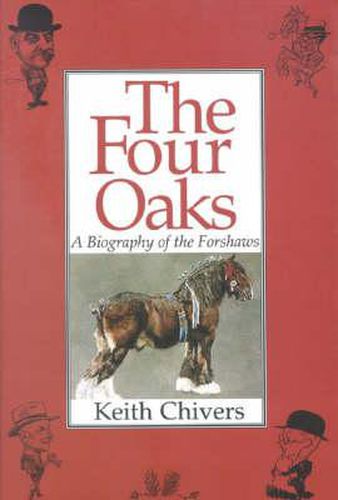Readings Newsletter
Become a Readings Member to make your shopping experience even easier.
Sign in or sign up for free!
You’re not far away from qualifying for FREE standard shipping within Australia
You’ve qualified for FREE standard shipping within Australia
The cart is loading…






The result of 30 years’ research, this book is a portrayal of the Age of the Horse, looking back on a vanished way of life but one with a great and growing appeal in this, a time of renewed interest in, and increasingly high profile of the heavy horse. The “Four Oaks’ were the leaders, through four generations, of the Forshaw family, pre-eminent in intemational Shire Horse breeding from the time of Waterloo until the end of the Second World War. Keith Chivers, the foremost authority on the history of the Shire Horse, presents material which is not only original, but unique. A close friend of Richard, the last of the Four Oaks, he is able to recount the Forshaw’s family history with inimitable accuracy and detail. Few, even of those old enough to remember their winter coal being delivered by a horse, have paused to consider how these animals were bred: their mothers were farm workers scattered throughout the country; their fathers were travelling stallions, walking up to seventy miles a week, each covering perhaps a hundred or more mares in a season. For the majority of farmers in England and Wales cart-horse breeding was only a side-line, but the specialist stallion-owners developed a highly organised and sophisticated system, which brought about an astonishing improvement in the power and longevity of the animals toiling in the towns. The Forshaws were the foremost proprietors of heavy drought stallions in the country, renowned both at home and abroad for the quality of their animals. Largely thanks to them, by 1914 the English Shire was the most efficient drought horse in the world. Keith Chivers realises that for most of us the lives and eccentricities of people are more interesting than horses , and this book is peppered with accounts of the people and customs of the horse age. He recounts how the public stallion business had a such a devastating effect on rural morals that mothers locked up their daughters when the stallion came to town - in Scotland a law was passed prohibiting the serving of mares in any place where women or boys could see it. We are introduced to a group of people spanning the social spectrum - ranging from George V to Gwen Webb-Peploe, daughter of the Vicar of Christ Church Cheltenham. Keith Chivers is the author of many other books and papers on the Shire Horse including The Shire Horse , The Heavy Horse Manual , and History with a Future . He was the honorary historian of the Shire Horse Society from 1963, and from 1990 has been responsible for establishing a Shire Horse Archive.
$9.00 standard shipping within Australia
FREE standard shipping within Australia for orders over $100.00
Express & International shipping calculated at checkout
The result of 30 years’ research, this book is a portrayal of the Age of the Horse, looking back on a vanished way of life but one with a great and growing appeal in this, a time of renewed interest in, and increasingly high profile of the heavy horse. The “Four Oaks’ were the leaders, through four generations, of the Forshaw family, pre-eminent in intemational Shire Horse breeding from the time of Waterloo until the end of the Second World War. Keith Chivers, the foremost authority on the history of the Shire Horse, presents material which is not only original, but unique. A close friend of Richard, the last of the Four Oaks, he is able to recount the Forshaw’s family history with inimitable accuracy and detail. Few, even of those old enough to remember their winter coal being delivered by a horse, have paused to consider how these animals were bred: their mothers were farm workers scattered throughout the country; their fathers were travelling stallions, walking up to seventy miles a week, each covering perhaps a hundred or more mares in a season. For the majority of farmers in England and Wales cart-horse breeding was only a side-line, but the specialist stallion-owners developed a highly organised and sophisticated system, which brought about an astonishing improvement in the power and longevity of the animals toiling in the towns. The Forshaws were the foremost proprietors of heavy drought stallions in the country, renowned both at home and abroad for the quality of their animals. Largely thanks to them, by 1914 the English Shire was the most efficient drought horse in the world. Keith Chivers realises that for most of us the lives and eccentricities of people are more interesting than horses , and this book is peppered with accounts of the people and customs of the horse age. He recounts how the public stallion business had a such a devastating effect on rural morals that mothers locked up their daughters when the stallion came to town - in Scotland a law was passed prohibiting the serving of mares in any place where women or boys could see it. We are introduced to a group of people spanning the social spectrum - ranging from George V to Gwen Webb-Peploe, daughter of the Vicar of Christ Church Cheltenham. Keith Chivers is the author of many other books and papers on the Shire Horse including The Shire Horse , The Heavy Horse Manual , and History with a Future . He was the honorary historian of the Shire Horse Society from 1963, and from 1990 has been responsible for establishing a Shire Horse Archive.